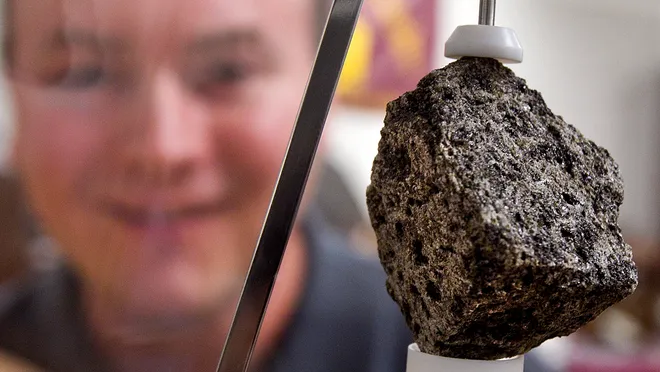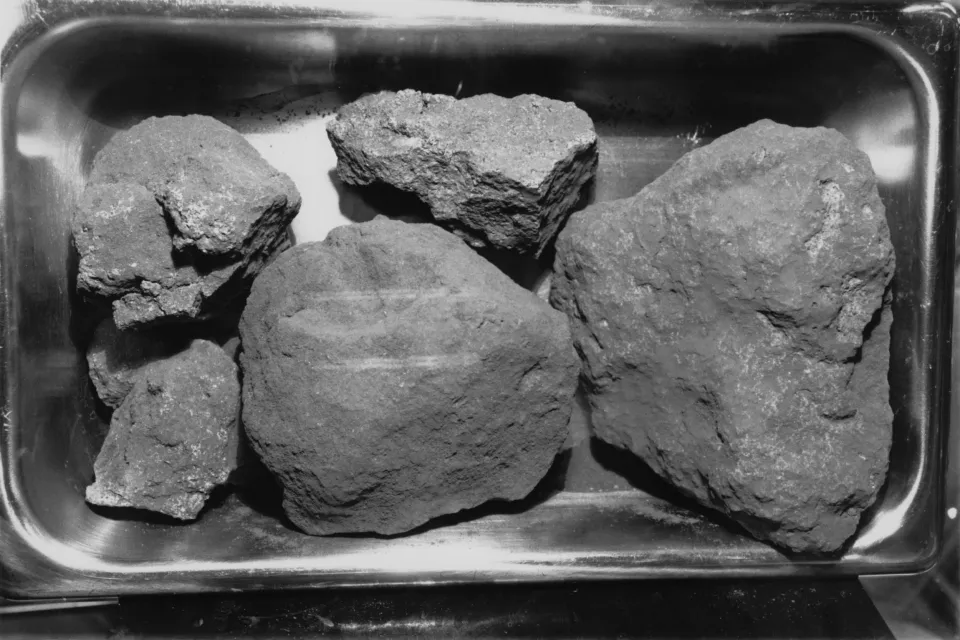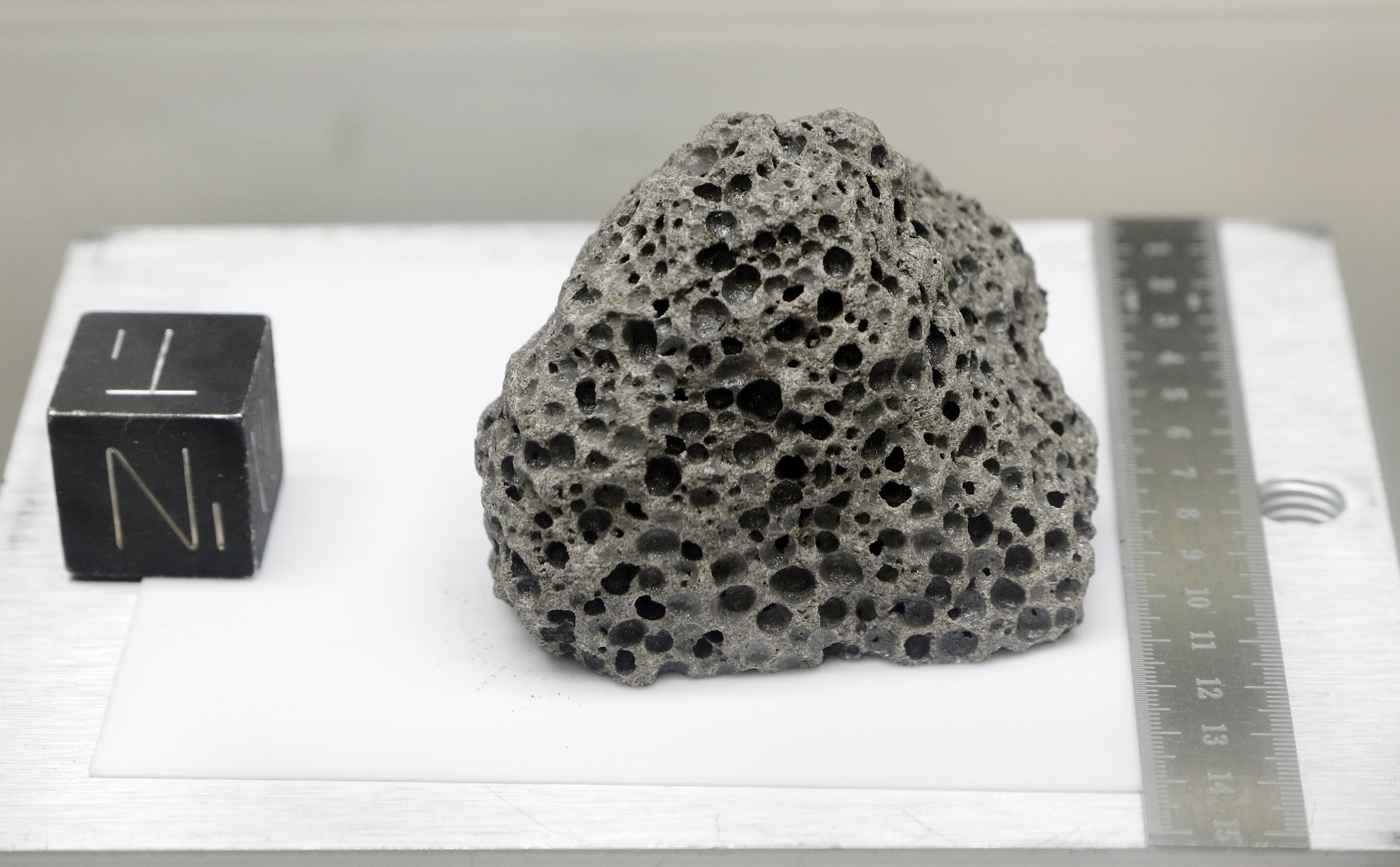The Moon has long been a source of fascination and mystery for humankind, inspiring myths, legends, and scientific exploration. When the Apollo 11 mission brought back lunar samples in 1969, it marked a monumental moment in history.
Some of these precious Piece of Moon was gifted to nations around the world, symbolizing goodwill and the boundless potential of human exploration.
Ireland was among the recipients of this extraordinary gesture. However, the journey of its Moon rock—a gift as remarkable as it was rare—was marred by mismanagement, misplacement, and an unfortunate fire that led to its tragic destruction.
Piece of Moon
The story begins with the Apollo 11 mission, a historic venture that marked humanity’s first steps on the lunar surface. As a token of international goodwill, small fragments of the Moon were distributed to various countries, accompanied by plaques displaying the recipient nation’s flag.
Ireland received its first Moon rock in 1970, presented to President Éamon de Valera by the U.S. ambassador to Ireland, J.G. Moore. This gift symbolized not only the monumental achievement of space exploration but also the strengthening of international relations.
Initially, the lunar fragment spent its days stored in a government basement, a fate that underscored the indecision surrounding its proper display. For over three years, officials debated where this piece of lunar history might best be showcased.
It wasn’t until the United States offered Ireland a second Moon rock in 1973, following another successful Apollo mission, that a decision was made.
Read : NASA’s Moon Trees from Artemis I Mission Blossom Across the US
The Department of Education recommended that the first Moon rock be displayed at the Dunsink Observatory, managed by the Dublin Institute for Advanced Studies.
Read : The Birth Story of Earth’s Beloved Moon: A Cosmic Journey
This choice was driven by a desire to avoid embarrassment; it would have seemed ungrateful if Ireland’s first lunar gift remained out of sight when a second was on the way.
A Tragic Turn of Events at Dunsink Observatory
Relocating the Moon rock to Dunsink Observatory was intended to ensure its visibility to the public and emphasize its scientific significance. Unfortunately, this decision inadvertently sealed the artifact’s fate. On October 3, 1977, a fire broke out at the observatory, engulfing the facility and destroying the priceless piece of lunar history.
The event was a devastating loss, both symbolically and scientifically. This unique connection to the Apollo program, which had traveled over 380,000 kilometers from the Moon to Earth, was gone forever.

The loss was a poignant reminder of the fragility of historical artifacts and the importance of proper preservation. At the time, the absence of suitable facilities to house and display such an extraordinary object reflected broader challenges in Ireland’s cultural and scientific infrastructure.
This incident also highlighted the need for clear strategies to safeguard national treasures, especially those with significant international value.
The Second Moon Rock and Its Eventful Journey
In 1973, Ireland received a second lunar sample, presented with a special plaque that included the Irish tricolor. This time, the gift was displayed more prominently.
Initially placed in the drawing room of Áras an Uachtaráin, the residence of the Irish President, the Moon rock’s visibility was limited to invited guests. Recognizing that the U.S. intention was for the artifact to be publicly accessible, discussions arose about finding a more appropriate venue.
The lunar plaque embarked on a remarkable journey across various institutions and events. In 1976, it was loaned to Aer Lingus, Ireland’s national airline, for the Aer Lingus Young Scientist Exhibition.

Later, the Department of the Taoiseach considered a permanent display at the Geological Survey Office, which was developing a new exhibition space. Despite these plans, the Moon rock experienced several transitions, from being stored to being displayed temporarily in airport exhibition spaces operated by Aer Rianta.
By 1984, Aer Rianta was no longer interested in retaining the Moon rock, citing the end of its display period. This left officials scrambling to find a suitable home for the artifact. While the Geological Survey Office’s exhibition space seemed promising, it underscored the challenges of finding a permanent and meaningful location for such a unique object.
Lessons from a Lunar Legacy
The story of Ireland’s Moon rocks serves as a fascinating case study in the complexities of managing and preserving artifacts of profound historical and scientific significance. It reveals the challenges faced by nations in balancing public access, proper preservation, and the symbolic importance of such gifts.
The loss of the first Moon rock was a tragic blow, yet the survival and eventual exhibition of the second sample highlight the resilience of efforts to honor and share this extraordinary connection to space exploration.

The tale also underscores the broader implications of cultural stewardship. Artifacts like Moon rocks are not merely objects; they are symbols of humanity’s collective achievements and aspirations.
Their preservation requires not only technical expertise but also a commitment to ensuring that future generations can access and appreciate their significance.
The destruction of the first Moon rock at Dunsink Observatory remains a poignant reminder of the impermanence of even the most extraordinary relics.
However, the ongoing efforts to showcase the second lunar gift reflect a continued dedication to celebrating the spirit of exploration and the ties that unite nations in pursuit of knowledge and discovery.

